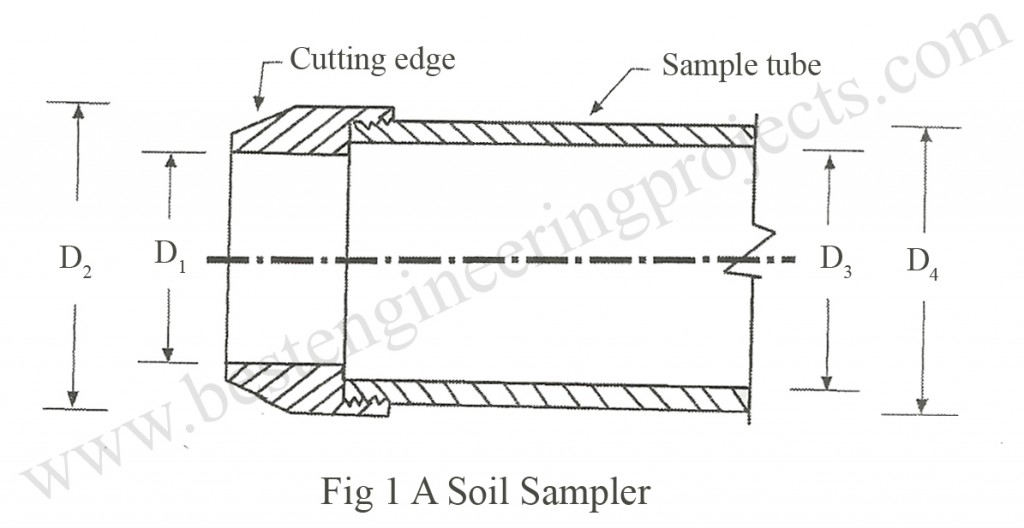What are the requirement of sampling?
In this article we will discuss about different requirement of sampling.
- Area Ratio – It is the degree of disturbance. In general terms, Area Ratio can be defined as a ratio of annular cross sectional area of the tube to the area of the sample. Mathematically, it is expressed as:
Where,
Ar = Area ratio
Do = Outside diameter of the tube
Di = Inside diameter of the tube
Usually, most code specifies that the area ratio should not exceed 25 %, it is the general trend. But, in case of high quality undisturbed samples it should be less than 20 %. Similarly, in no case the area ratio should be less than 10 %.
2. Inside Clearance Ratio – During sampling, if the inside diameter of the cutting edge is analogous to that of sampler used, the inside wall friction restricts the easy penetration of the sample in the tube and there might be further disturbance in the samples taken. Thus, while choosing the sampling tube, the inside diameter of the cutting edge must be slightly smaller than the inside diameter of the sampling tube to be at ease during taking samples.
This clearance allows the elastic expansion of the sample inside the tube and also reduces the frictional drag on the sample from the wall of the tube and thus helps to retain the core. The inside clearance ratio is defined as the difference in inside diameter of the cutting edge and the sampler to the inside diameter of the cutting edge. The further details of sampling tube are shown in Fig.1.
Where,
Ci = Inside clearance ratio
D3 = Inside diameter of the sampling tube
D1 = Inside diameter of the Cutting edge
For long samples, the inside clearance ratio should be in between 0.75 to 1.5. As per ISI, it should be about 3 %. Similarly for short samples, the inside clearance ratio should be less than 0.5 %. Low Value is considered favorable for sampling in sands. However, this ratio must be maintained up to 3 per cent for good sample recovery in certain days.
3. Outside Clearance Ratio – The outside clearance ratio facilitates the withdrawal of the sampling tube during the sampling process. The outside clearance ratio is the difference in outside diameter of the cutting edge and the sampler to the outside diameter of the sampler. The mathematical expression for this can be represented as:
Where, Co = Outside clearance ratio
D2 = Outside diameter of the cutting edge
D4 = Outside diameter of the sampling tube
For cohesion less soil, the outside clearance ratio should not exceed the inside clearance ratio. Preferably it should be Zero for better results in sampling process. For other types of soils, the outside clearance ratio cannot be more than 2 %. Normally, it should lie between zeros to 2 %.
4. Recovery Ratio – The degree of disturbance can also be predicted on the basis of the length of the sample recovered. If L is the length of the sample recovered and L’ be the actual depth of sampling, then the recovery ratio is given by the following expression:
A unit recovery ratio i.e. Lr =1 , indicates that the sample does not become compressed from friction on the tube. A recovery ratio greater than 1 would indicate loosening of the sample from rearrangement of stones, roots or removal of pre-load.
5. Cutting Edge – The cutting edge should be machine prepared and the outside taper should not exceed 20 °. Blunt cutting edge should not be permitted. It may cause errors in samples obtained.
6. Tubing – The sampling tube should be seamless and should have no protrusions. It should be perfectly round and the difference of outside diameter of the tube at any cross section should not exceed 1.5 mm.
Check another article on Sampling and Sampling Procedure
